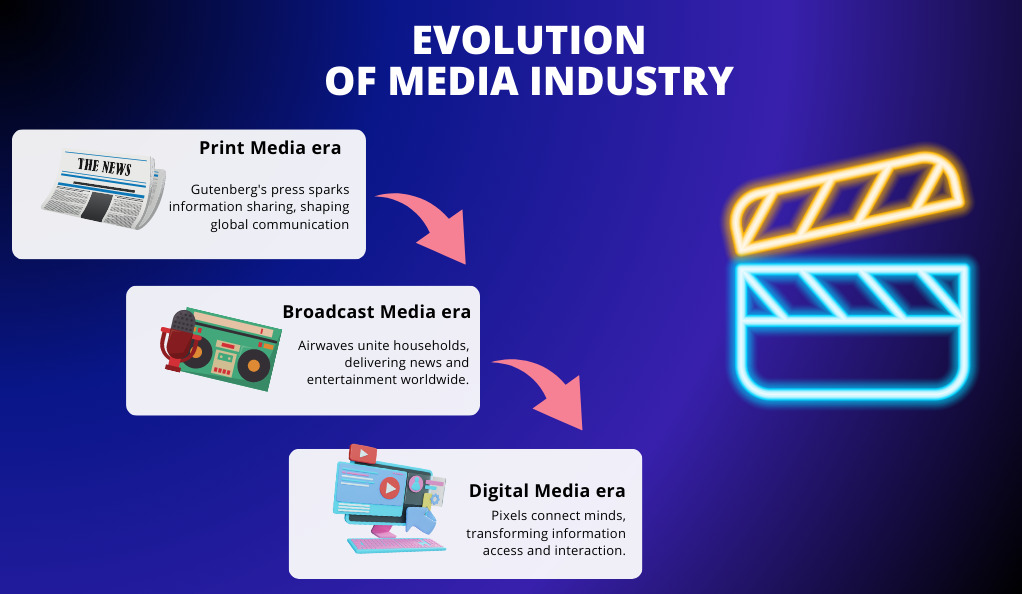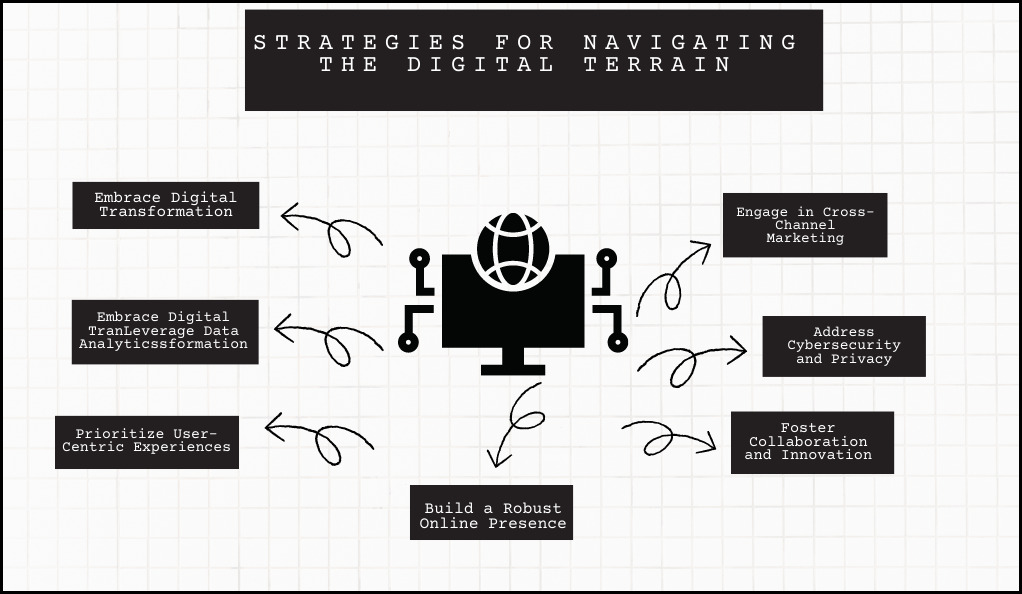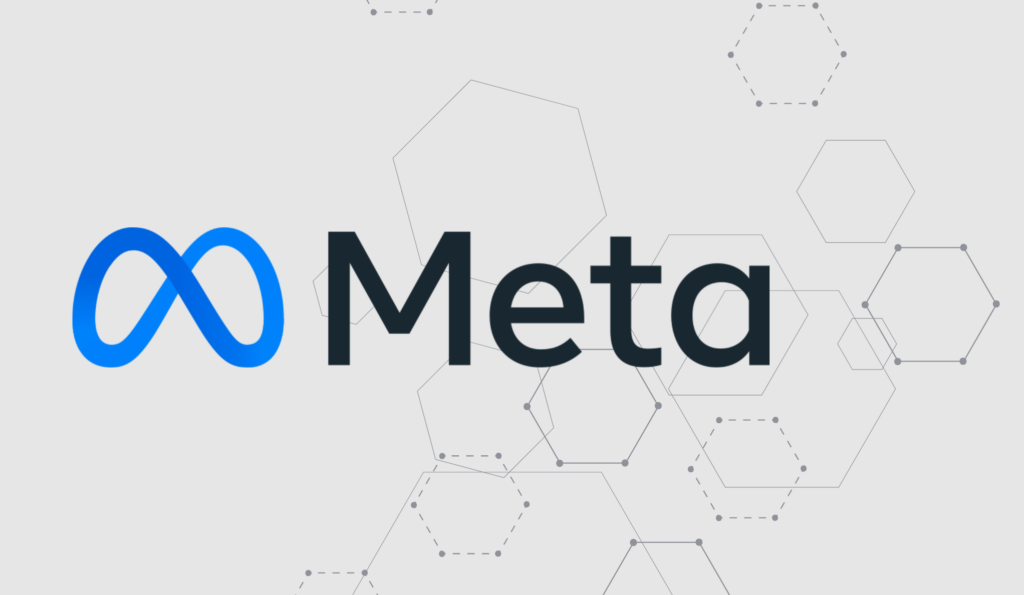Introduction to Asymmetries in the Digital Age
The digital age, characterized by the rapid proliferation of technology and the internet, has transformed the way we live, work, and communicate. However, with these advancements come disparities and imbalances, often referred to as “asymmetries.” These asymmetries manifest in various forms, from access to digital resources to power dynamics in the digital marketplace. Understanding these imbalances is crucial for ensuring that the digital age benefits all, rather than a select few.
Defining Asymmetries in the Digital Age
Asymmetries in the digital age refer to the uneven distribution of digital resources, capabilities, and power. These disparities can be seen in areas like internet access, digital literacy, and the control of digital platforms.
Types of Digital Asymmetries
- Access Asymmetry: Disparities in the availability and quality of internet access across different regions or demographics.
- Knowledge Asymmetry: Differences in digital literacy and the ability to use digital tools effectively.
- Power Asymmetry: Imbalances in the control and influence over digital platforms, often dominated by a few tech giants.
Causes of Digital Asymmetries
Economic factors, including economic disparities, can result in unequal access to digital resources. Geographical challenges present obstacles, as remote or underserved areas may lack the necessary infrastructure for high-speed internet connectivity. Furthermore, differing regulatory environments across regions can impede digital growth and hinder access to digital resources.
Implications of Digital Asymmetries

The economic impact of limited digital access is far-reaching, as regions without equitable connectivity might find themselves excluded from the vast economic opportunities the digital age offers. This exclusion can perpetuate cycles of underdevelopment and hinder growth prospects for businesses and individuals alike. Moreover, the digital divide, characterized by unequal access to digital resources, can deepen existing social inequalities. As digital literacy and participation become increasingly integral to education, employment, and civic engagement, marginalized groups may face barriers that further marginalize them, exacerbating disparities in opportunities and outcomes.
One of the consequential challenges arising from power asymmetries in the digital age is the potential for control and censorship. As a few entities amass significant control over digital platforms and narratives, there exists the possibility of biased content moderation, selective visibility, and the suppression of dissenting voices. This situation not only undermines the principles of an open and democratic digital landscape but also raises concerns about the manipulation of public opinion and the silencing of perspectives that do not align with those in power. Therefore, the impact of power asymmetries extends beyond economic disparities, encompassing the fundamental principles of free expression, access to information, and equitable representation in the digital realm.
Comparison: Digital Asymmetries vs. Traditional Asymmetries
| Criteria | Digital Asymmetries | Traditional Asymmetries |
|---|---|---|
| Nature | Based on digital resources and capabilities | Based on physical resources and capabilities |
| Impact | Affects digital access, literacy, and power dynamics | Affects access to basic amenities, education, etc. |
| Mitigation | Requires digital infrastructure and education | Requires physical infrastructure and traditional education |
Addressing and Overcoming Asymmetries
Addressing the challenges posed by digital asymmetries requires a multifaceted approach. First and foremost, investing in robust digital infrastructure is essential to ensure widespread access to the digital realm. This entails building the necessary technological backbone that can bridge geographical gaps and offer equitable connectivity to individuals and communities, regardless of their location. In parallel, implementing comprehensive digital education programs becomes crucial. Such initiatives should be tailored to enhance digital literacy across all age groups, equipping individuals with the skills needed to navigate the digital landscape confidently and responsibly. Furthermore, creating a regulatory environment that promotes fairness and equal access is imperative. This involves enacting regulatory reforms that prevent the concentration of power and resources in the hands of a few, thus fostering a level playing field where innovation thrives, and diverse voices can contribute to shaping the digital future.
The Changing Dynamics of the Media Industry

The media industry, once dominated by traditional print and broadcast outlets, has undergone a seismic shift in the digital age. The advent of the internet, social media platforms, and streaming services has revolutionized the way content is produced, distributed, and consumed. This transformation has brought both challenges and opportunities, reshaping the media landscape in profound ways.
Historical Overview of the Media Industry
Throughout history, the media industry has held a profound and enduring influence on society’s information landscape and cultural evolution. From the early days of newspapers and magazines to the advent of radio and television, these traditional mediums have consistently occupied a pivotal role in both informing and entertaining the masses. These platforms, often referred to as the “fourth estate,” have served as conduits of information, shaping public opinions, attitudes, and behaviors. Through the power of print, radio waves, and televised broadcasts, the media has not only disseminated news and entertainment but has also acted as a mirror reflecting the prevailing social narratives and values of their times.
The impact of these traditional media forms is exemplified by their ability to set the tone for public discourse and cultural trends for decades on end. Newspapers and magazines, with their meticulous reporting and editorial perspectives, have functioned as trusted sources of information, informing readers about local, national, and international events. Radio broadcasts, with their immediacy and auditory appeal, brought news and entertainment directly into the homes of listeners, fostering a sense of connectedness in an era before visual media dominated. Television, with its visual and audio capabilities, revolutionized storytelling, allowing audiences to witness historical events and narratives unfold in real time. Collectively, these mediums have shaped the collective consciousness, influencing societal values, opinions, and shared narratives that have resonated through generations.
Key Drivers of Change
- Technological Advancements: The rise of the internet and mobile devices has democratized content access and distribution.
- Consumer Preferences: The demand for on-demand content and personalized experiences has surged.
- Monetization Models: The shift from subscription-based models to ad-based and freemium models.
Impact on Traditional Media Outlets
- Decline in Print: Newspapers and magazines face declining readership and ad revenues.
- Broadcast TV’s Challenge: With the rise of streaming services, traditional TV sees fragmented viewership.
- Radio’s Transformation: Digital and satellite radio offer new avenues, but local stations grapple with relevance.
Rise of New Media Platforms

- Social Media: In recent times, platforms such as Facebook, Twitter, and Instagram have emerged as influential conduits for news consumption. Their user-friendly interfaces and vast user bases have transformed them into major sources of news, shaping public opinions and enabling real-time access to a diverse range of information from around the world.
- Streaming Services: The landscape of entertainment consumption has been revolutionized by platforms like Netflix, Hulu, and Amazon Prime. These streaming services have fundamentally reshaped how audiences access and engage with content, offering a vast library of movies, shows, and documentaries at their fingertips, while also influencing viewing habits and content production trends.
- Podcasts and Webinars: These digital formats provide specialized content tailored to a wide range of interests, appealing to diverse audiences with their unique offerings and catering to individual preferences and passions.
Comparison: Traditional Media vs. Digital Media
| Criteria | Traditional Media | Digital Media |
|---|---|---|
| Accessibility | Limited by physical distribution and broadcast times | Anytime, anywhere access via the internet |
| Content Lifespan | Short-lived, especially for daily news | Permanent and searchable online archives |
| Interactivity | Mostly one-way communication | Two-way communication, allowing for user engagement |
Challenges and Opportunities in the New Media Landscape
- Challenges:
- Adapting to rapidly changing technology.
- Battling misinformation and fake news.
- Navigating the complexities of digital monetization.
- Opportunities:
- Reaching global audiences without geographical constraints.
- Engaging with audiences in real-time.
- Diversifying revenue streams with digital products and services.
The Future of the Media Industry
The future trajectory of the media industry hinges on its capacity to navigate the ever-changing terrain through adaptation and innovation. As the horizons expand to encompass emerging technologies like augmented reality (AR), virtual reality (VR), and artificial intelligence (AI), a new realm of possibilities for content creation and distribution emerges. These transformative technologies offer the potential to reshape storytelling, enabling immersive experiences that blur the boundaries between the real and the digital. Augmented reality can overlay digital elements onto the physical world, enhancing narratives with interactive layers, while virtual reality plunges audiences into entirely new dimensions, offering unparalleled engagement. Moreover, the integration of AI promises to revolutionize personalization, content recommendation, and even automated content creation, further revolutionizing the industry.
In this dynamic landscape, the industry’s resilience and relevance depend on its willingness to embrace these technological leaps and respond to shifting consumer preferences. Staying attuned to evolving tastes and habits is paramount, as the democratization of content production and distribution empowers both traditional players and emerging creators. By adopting an audience-centric approach, media entities can craft experiences that resonate deeply with consumers, fostering loyalty and engagement. In essence, the media industry’s success in the future will be determined by its capacity to harness the potential of AR, VR, and AI, leveraging them to craft captivating narratives that transcend the conventional and usher in a new era of storytelling.
The Asymmetrical Power Struggle
In the intricate web of societal structures, power dynamics play a pivotal role. The balance of power, or often the imbalance, shapes interactions, decisions, and outcomes at various levels, from interpersonal relationships to global politics. The concept of an “asymmetrical power struggle” delves into situations where power is unevenly distributed, leading to advantages for some and disadvantages for others. This imbalance, while not new, has taken on new dimensions in the digital age and globalized world.
Understanding Power Asymmetry
Power asymmetry refers to situations where one party possesses more power, influence, or resources than another. This imbalance can manifest in various forms, from economic and political dominance to control over information and narratives.
Historical Context of Power Imbalances
Throughout history, power imbalances have manifested in various forms:
- Colonialism and Imperialism: Dominant nations exerting control over weaker regions.
- Societal Hierarchies: Class, race, and gender-based hierarchies reinforcing unequal power distribution.
Manifestations in Modern Society
In the intricate tapestry of societal dynamics, various facets of power asymmetry emerge: Economic disparities see corporations and affluent individuals exerting substantial sway over economic policies and decisions. On the political front, superpowers and dominant political parties assert their influence by shaping agendas on both global and national scales. Moreover, the realm of information witnesses the control wielded by media conglomerates or state-controlled media, significantly impacting public perceptions and narratives.
Digital Age and Power Asymmetry
In the ever-evolving realm of modern dynamics, distinct dimensions of power asymmetry emerge: Tech giants, exemplified by Google, Facebook, and Amazon, command substantial authority within digital landscapes. Entities that wield control over data possess the potential to shape behaviors, sway decisions, and even impact electoral outcomes. The digital divide further accentuates these disparities, conferring advantages upon those with access to digital resources, leaving others at a disadvantage.
Comparison: Traditional Power Struggles vs. Digital Age Power Struggles
| Criteria | Traditional Power Struggles | Digital Age Power Struggles |
|---|---|---|
| Nature | Based on physical resources, territories, and manpower | Based on data, digital platforms, and online influence |
| Duration | Often long-standing and multi-generational | Can be transient, but with rapid impact |
| Resolution | Diplomacy, wars, revolutions | Regulations, digital rights movements, tech disruptions |
Implications of Asymmetrical Power Dynamics
- Marginalization:
Individuals and groups with diminished influence frequently encounter exclusion and a dearth of adequate representation, further underscoring the imbalances within societal structures.
- Exploitation:
Power imbalances have the potential to give rise to the exploitation of vital resources, data, or labor, amplifying the vulnerabilities inherent in such disparities.
- Resistance:
Asymmetries frequently serve as catalysts for resistance movements, manifesting in various forms both within physical spaces and the digital realm.
Navigating and Addressing Power Asymmetries
To create a more equitable world, it’s essential to:
- Recognize and understand power imbalances.
- Advocate for fair policies and regulations.
- Empower marginalized groups through education, resources, and platforms.
The Threat to Democracy and the Media Sector

Democracy, a system where power is vested in the hands of the people, relies heavily on the free flow of information and an informed citizenry. The media sector, often dubbed the “fourth estate,” plays a crucial role in this, acting as a watchdog and a bridge between the government and the public. However, in recent times, both democracy and the media sector face unprecedented threats, challenging their very essence and the symbiotic relationship they share.
The Pillars of Democracy and Role of Media
Democracy thrives on principles like freedom of expression, pluralism, and checks and balances. The media sector serves as an essential pillar, ensuring transparency, holding power to account, and facilitating public discourse.
Historical Threats to Democracy and Media
Throughout history, the landscape of democratic principles has been marred by persistent threats posed by authoritarian regimes, censorship, and propaganda. These formidable adversaries have consistently targeted the core tenets of democracy, seeking to suppress free speech, curtail information dissemination, and manipulate public perceptions. Authoritarian regimes, characterized by concentrated power and limited civil liberties, have sought to silence dissenting voices and maintain a controlled narrative that aligns with their agendas. Censorship, whether overt or subtle, has been employed to stifle the flow of information that challenges the status quo, effectively thwarting the public’s ability to access diverse perspectives and make informed decisions.
The insidious nature of propaganda has further exacerbated the challenges faced by democratic values. By disseminating misleading or false information, regimes have manipulated public sentiment and manufactured consent, corroding the foundation of transparent and open discourse that democracy hinges upon. The history of media’s interaction with these threats is one of resilience and adaptation, as journalists and media outlets have often found themselves at the forefront of battles to preserve the integrity of information and uphold democratic ideals. In the face of these historical challenges, the media’s role in safeguarding democratic values has proven to be indispensable, illustrating the critical importance of a vigilant press that serves as a guardian of truth and accountability.
Modern Challenges and Threats
- Disinformation and Fake News: The spread of false information erodes public trust and skews perceptions.
- Media Consolidation: Fewer entities controlling media can lead to biased narratives and reduced diversity of voices.
- Online Harassment: Journalists, especially women and minorities, face threats and harassment, chilling free speech.
Digital Disruptions and Implications
The realm of social media presents a dual nature—simultaneously democratizing information and amplifying falsehoods, thus magnifying polarization of opinions. Concerns over data privacy loom large, with the potential misuse of personal data impacting electoral processes and public sentiment. Additionally, algorithmic biases wield influence, inadvertently constructing echo chambers that reinforce prevailing beliefs while stifling the expression of diverse viewpoints.
Comparison: Traditional Threats vs. Modern Threats
| Criteria | Traditional Threats | Modern Threats |
|---|---|---|
| Nature | State-controlled, overt censorship, physical repression | Digital, covert, misinformation, data manipulation |
| Scope | Often localized or national | Global, transcending borders due to the internet |
| Countermeasures | Protests, underground press, international pressure | Digital literacy, fact-checking, platform regulations |
Consequences of a Weakened Media on Democracy
- Reduced Accountability: Without a robust media, power structures can operate without scrutiny.
- Misinformed Electorate: A democracy needs informed voters; without accurate information, decision-making suffers.
- Erosion of Trust: When media is compromised, public trust in both the media and democratic institutions can wane.
Safeguarding Democracy and the Media Sector
To protect the intertwined fates of democracy and the media:
- Promote media literacy and critical thinking.
- Support independent journalism and diverse media outlets.
- Advocate for regulations that ensure transparency and accountability in the digital realm.
Strategies for Navigating the Digital Terrain

The digital landscape, ever-evolving and complex, presents both opportunities and challenges for individuals, businesses, and societies at large. Navigating this terrain effectively requires a strategic approach that takes into account the rapid pace of technological advancements, changing consumer behaviors, and the interconnected nature of the digital realm. By adopting well-thought-out strategies, entities can harness the potential of the digital age while mitigating risks and maximizing benefits.
1. Embrace Digital Transformation
2. Leverage Data Analytics
3. Prioritize User-Centric Experiences
4. Build a Robust Online Presence
5. Engage in Cross-Channel Marketing
6. Address Cybersecurity and Privacy
7. Foster Collaboration and Innovation
Regulating Global Platforms: A Global Challenge
In the digital age, global platforms wield unprecedented influence over information dissemination, communication, and commerce. These tech giants, with vast user bases and cross-border operations, have transformed the way we interact with the digital world. However, their immense power and reach also raise concerns about privacy, competition, and the potential for misuse. Regulating these global platforms presents a complex challenge that requires international cooperation, innovative approaches, and a balance between innovation and accountability.
The Rise of Global Platforms
In the contemporary digital landscape, tech titans such as Facebook, Google, Amazon, and Apple have etched their names as household favorites, wielding unparalleled global dominance. These giants anchor their supremacy through services that billions of users depend on for daily interactions and transactions, shaping modern lifestyles and interactions in profound ways.
The Need for Regulation
Within the intricate fabric of digital ecosystems, a discernible power imbalance is evident, where global platforms wield disproportionate influence. Apprehensions about data privacy reverberate, encompassing worries regarding the collection, storage, and sharing practices of user information. Simultaneously, the specter of market dominance looms, eliciting concerns of stifled competition and the emergence of monopolistic environments that can reshape entire industries.
Challenges in Regulating Global Platforms
- Jurisdictional Complexities: The complex landscape of digital platforms spans international boundaries, posing a formidable challenge to achieving uniform regulation. Navigating jurisdictional complexities demands innovative solutions to ensure a cohesive regulatory framework that effectively addresses the multifaceted aspects of global digital operations.
- Evolving Technologies: The swift pace of technological progress frequently outstrips the development of regulatory frameworks, creating a gap that poses challenges in effectively governing and managing the burgeoning digital landscape.
- Public vs. Private Interests: Striking a delicate equilibrium between corporate interests, safeguarding user rights, and upholding the welfare of the public is a nuanced endeavor that requires navigating intricate ethical and legal considerations.
Balancing Innovation and Accountability
Fostering a thriving climate of innovation necessitates a cautious approach to regulations that could inadvertently impede the trajectory of technological advancements. Striking a balance between maintaining an environment conducive to breakthroughs while also addressing potential ethical and societal concerns is crucial. In tandem with this, enforcing mechanisms that ensure accountability assumes paramount importance. Implementing robust safeguards, whether through transparent data usage practices, stringent content moderation, or effective enforcement of cybersecurity protocols, becomes pivotal to forestall misuse and protect users’ privacy, well-being, and the integrity of the digital landscape. This dual commitment to innovation and accountability forms the cornerstone of a sustainable and harmonious digital ecosystem.
International Cooperation and Governance
Forging a global consensus involves cross-border collaboration among nations to establish unified regulatory standards that harmonize the digital landscape. By engaging in cooperative efforts, countries can pool their expertise, resources, and perspectives to create regulations that transcend geographical boundaries, fostering a more cohesive and equitable digital environment.
Moreover, leveraging multilateral organizations such as the United Nations can serve as a powerful conduit for facilitating critical discussions and agreements. These platforms provide neutral spaces where nations can collectively address challenges, exchange insights, and chart a course toward effective regulatory frameworks that resonate with the diverse needs of the global community.
Potential Regulatory Approaches
- Data Protection Laws: Stricter regulations on data collection, usage, and consent.
- Antitrust Measures: Preventing anti-competitive behavior and ensuring fair market competition.
- Content Moderation: Holding platforms accountable for harmful content and misinformation.
The Future of Power Dynamics in the Digital Age
As the digital age continues to unfold, it brings with it a tapestry of possibilities and uncertainties. The power dynamics that shape our interactions, economies, and societies are poised for transformation in the wake of technological advancements, changing paradigms, and evolving global landscapes. Examining the potential trajectories of power dynamics in the digital age offers insights into what lies ahead and how individuals, organizations, and governments can navigate this uncharted terrain.
The Evolution of Power in the Digital Age
A transformative shift is unfolding as traditional hierarchies yield ground to interconnected and decentralized networks. This transition reflects a changing paradigm where power dynamics are redefined, fostering a landscape characterized by greater inclusivity and collaboration. Concurrently, the democratization of information is exerting its influence, punctuating the transformation. The accessibility of information to a broader populace is fundamentally reshaping how power is wielded and influencing decision-making processes. As information becomes a democratized force, individuals are empowered to participate more actively, and the once entrenched hierarchies find themselves navigated by the current of a more interconnected society.
Shifting Centers of Influence
- Tech Industry Dominance: The ascension of tech giants heralds a paradigm where they emerge as formidable power centers, exerting significant influence over economies and societies. These behemoths wield the capacity to shape technological innovation, economic trajectories, and even cultural norms, redefining the contours of power dynamics in the digital age.
- Rise of Emerging Markets: The emergence of players from burgeoning markets introduces a transformative dimension to global power dynamics. As these emerging markets assert themselves, they disrupt traditional hierarchies, potentially recalibrating economic and geopolitical landscapes. This shift underscores the dynamic nature of power, where new actors challenge established norms, contributing to a more multipolar world order.
Emerging Technologies and Power Dynamics
The relentless advance of AI and automation is ushering in a profound transformation across industries, heralding potential shifts in labor dynamics and the nature of work itself. Simultaneously, blockchain technology is making waves by dismantling centralized systems and reimagining the foundation of trust in transactions. These innovations stand as exemplars of the seismic shifts underway in the digital age, casting ripples that traverse economic, social, and technological realms.
The Role of Data and Algorithms
- Data as a Currency: Organizations leveraging data for strategic advantage.
- Algorithmic Decision-Making: Algorithms shaping everything from content recommendations to financial decisions.
Challenges and Ethical Considerations
- Digital Divide: Bridging the digital divide necessitates equitable access to digital resources. Ensuring universal connectivity empowers marginalized communities, enabling them to partake in the benefits of the digital age, access educational opportunities, and engage in economic activities on a level playing field.
- Privacy Concerns: Navigating the digital landscape mandates balancing data utilization with user privacy rights. Striking this equilibrium requires robust data protection measures, transparent data usage policies, and user consent mechanisms to uphold privacy while harnessing the potential of data-driven innovations.
- Algorithmic Bias: Confronting algorithmic bias entails rectifying disparities arising from algorithmic decision-making. Mitigating such biases mandates continuous monitoring, fine-tuning algorithms, and instituting safeguards to prevent unintended discrimination, ensuring algorithms uphold fairness and equity across diverse user bases.
Potential Scenarios for Power Dynamics
Envisioning potential trajectories within the digital landscape yields three distinct scenarios:
- Empowered Individuals: Amplified access to information augments individual decision-making prowess. Empowering individuals through widespread information availability enables them to make informed choices that align with their interests, thus fostering a society where agency and self-determination flourish.
- Technocratic Control: A scenario unfolds where power coalesces in the hands of those who command technological infrastructure. This concentration of power influences various facets of society, from policy formation to resource allocation, potentially shaping a landscape defined by centralized authority.
- Collaborative Governance: A landscape characterized by networked relationships and global collaboration emerges, shaping governance structures. This scenario underscores the power of collective efforts, transcending borders, and embracing a cooperative approach to decision-making and resource management.
Navigating the Unknown: Strategies for the Future
In navigating the ever-evolving digital terrain, success hinges on a set of strategic imperatives:
- Adaptability: Embracing a nimble approach that responds adeptly to the swift pace of technological transformations. Being agile enables individuals, organizations, and governments to seize opportunities and address challenges in a rapidly changing digital landscape.
- Ethical Leadership: Anchoring decision-making in a strong ethical framework is paramount. Prioritizing ethical considerations in matters of technology, power dynamics, and data governance fosters a responsible and sustainable digital ecosystem that safeguards individual rights and societal well-being.
- Education and Digital Literacy: Equipping individuals with the knowledge and skills to navigate the digital realm responsibly is integral. Robust education and digital literacy initiatives empower people to discern information, protect their privacy, and engage in online interactions with a heightened awareness of potential risks and benefits.
By embracing these imperatives, stakeholders can chart a course that ensures resilience, ethical integrity, and informed engagement in the dynamic landscape of the digital age.
Conclusion
In the dynamic expanse of the digital age, the interplay of power dynamics promises a future both intriguing and uncertain. As our world becomes increasingly interconnected, the evolution of hierarchies into networks and the democratization of information stand as harbingers of change. The ascent of tech industry giants and the rise of emerging markets herald shifts in centers of influence, while technologies like AI and blockchain forge new pathways of impact. Amidst these shifts, the role of data and algorithms underscores the delicate balance between opportunity and ethical considerations.
In navigating this uncharted terrain, societies must grapple with challenges ranging from the digital divide to privacy concerns and algorithmic bias. As potential scenarios unfurl—empowering individuals, cementing technocratic control, or fostering collaborative governance—strategies for the future crystallize. Embracing adaptability, cultivating ethical leadership, and fostering digital literacy pave the way forward. Ultimately, the future of power dynamics in the digital age lies at the intersection of technological progress, ethical decision-making, and the collective endeavor to shape a balanced and equitable tomorrow.








